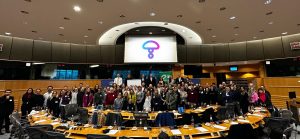Abstract
Ever since the modern rediscovery of psychedelic substances by Western society, several authors have independently proposed that their effects bear a high resemblance to the dreams and dreamlike experiences occurring naturally during the sleep-wake cycle. Recent studies in humans have provided neurophysiological evidence supporting this hypothesis. However, a rigorous comparative analysis of the phenomenology (“what it feels like” to experience these states) is currently lacking. We investigated the semantic similarity between a large number of subjective reports of psychoactive substances and reports of high/low lucidity dreams, and found that the highest-ranking substance in terms of the similarity to high lucidity dreams was the serotonergic psychedelic lysergic acid diethylamide (LSD), whereas the highest-ranking in terms of the similarity to dreams of low lucidity were plants of the Datura genus, rich in deliriant tropane alkaloids.. Conversely, sedatives, stimulants, antipsychotics and antidepressants comprised most of the lowest-ranking substances. An analysis of the most frequent words in the subjective reports of dreams and hallucinogens revealed that terms associated with perception (“see”, “visual”, “face”, “reality”, “color”), emotion (“fear”), setting (“outside”, “inside”, “street”, “front”, “behind”) and relatives (“mom”, “dad”, “brother”, “parent”, “family”) were the most prevalent across both experiences. In summary, we applied novel quantitative analyses to a large volume of empirical data to confirm the hypothesis that, among all psychoactive substances, hallucinogen drugs elicit experiences with the highest semantic similarity to those of dreams. Our results and the associated methodological developments open the way to study the comparative phenomenology of different altered states of consciousness and its relationship with non-invasive measurements of brain physiology.
Tagliazucchi, E., & Sanz, C. (2018). The experience elicited by hallucinogens presents the highest similarity to dreaming within a large database of psychoactive substance reports. Frontiers in Neuroscience, 12, 7. 10.3389/fnins.2018.00007
Link to full text









